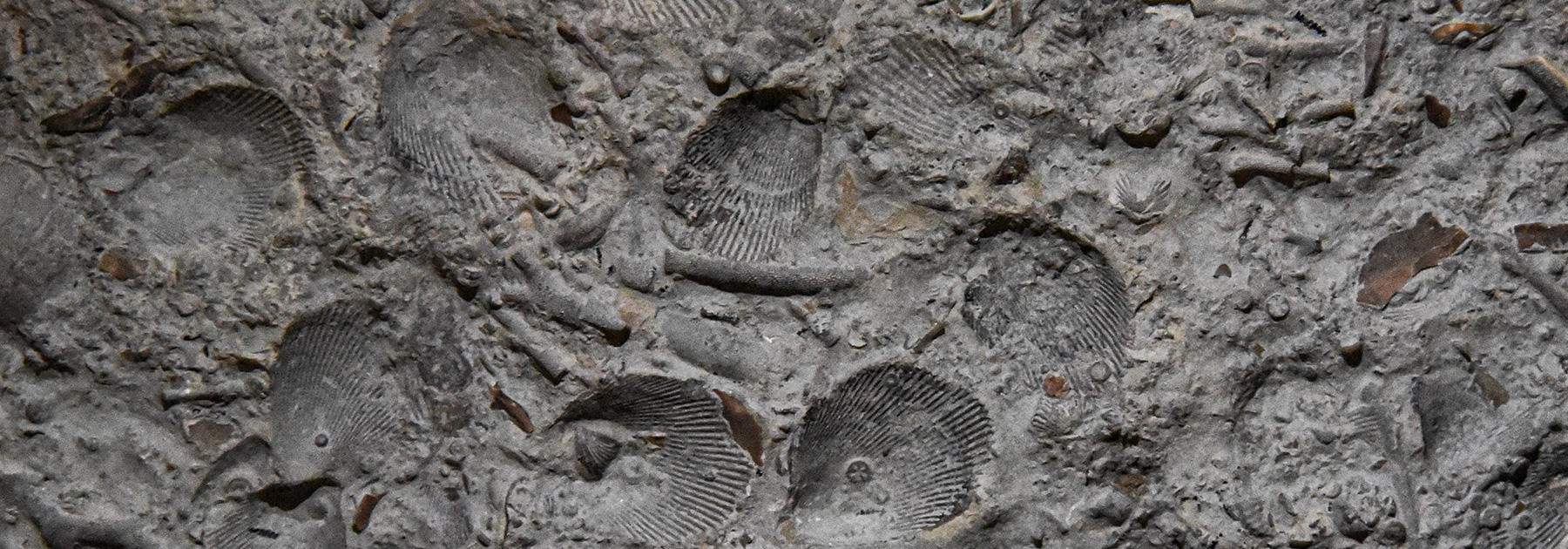
Finding Fossils
Fossil collecting rules & ethics
Fossil collectors are encouraged to focus on personal safety and the protection of the environment.
- Be safe.
- Familiarize yourself with laws and regulations and observe them.
- Collect with a buddy, or make sure someone knows your plans.
- Leave gates and property as you find them.
- Protect plants and animals.
- Take all litter away with you.
- Consider other people.
- Keep children and dogs under close control.
- Get permission from landowners before collecting on personal property.
Where to look for fossils
- Cliffs and bluffs. Outcrops of bare rock occur where water and wind pick up sediment and prevent soil formation on top of the bedrock.
- River, creek, and stream valleys. Moving water gradually cuts downwards, exposing layers of rock.
- Cuttings. Artificial “valleys” cut for roads, railways, and other pathways are some of the best places for finding fossils, but the noise and activity of a busy road require extra caution.
- Quarries and mines. Commercial mining and quarrying sites expose enormous amounts of rock. Quarries are private property, so get permission from the owner before collecting.
Collecting sites in the Cincinnati region
Collecting rules apply at all of these sites, obtain collecting permits at park visitor center.
- Trammel Fossil Park (Hamilton County, OH)
For the first-timer, Trammel Fossil Park in Sharonville, Ohio is a great place to start. This 10-acre park is dedicated to fossil collecting, and has signs detailing fossil information on the site, as well as posts labeling each rock layer. - Brookville Lake Dam (Franklin County, IN)
- Caesar’s Creek State Park (Clinton/Warren Counties, OH)
- Cowan Lake State Park (Clinton County, OH)
- East Fork State Park (Clermont County, OH)
- Hueston Woods State Park (Preble/Butler Counties, OH)
What to wear
Wear comfortable and durable, weather-appropriate clothes. Dressing in layers allows you to make adjustments to the conditions. Sturdy boots or hiking shoes will help provide steady footing on uneven ground. Long pants and long sleeves provide protection from rock debris, sun, insects and plants. A brimmed hat and sunglasses also provide comfort and protection.
Goggles, work gloves and a high-visibility vest are important safety tools. Helmets are useful for sites with overhangs or loose rocks overhead.
Collecting tools & supplies
- Sandwich bags can help you save and carry fossils you find.
- Pen and paper to take notes about your discoveries and experience.
- Geological hammer, with one blunt face and one chisel-end, to split rock layers and extract fossils.
- Hand lens to magnify small details.
How to get started at a collecting site
- Go easy and take care. It is best to work slowly, little by little. One hard blow with a hammer can easily destroy a prize specimen.
- Work from big to little, tough to delicate. Use larger tools to remove extra or unwanted rock, then work more sensitively and in greater detail as the specimen is exposed.
- Work with the rock, rather than against it. Use natural breaks or bedding planes to your advantage.
- Remove a rock containing a fossil, rather than the specimen itself. Leave detailed exposure and cleaning until later.
Guidance about collecting
One of the best things you can do to learn when you are getting started is to talk with other fossil collectors and professional paleontologists in your area. Local fossil groups can provide helpful advice on planning and equipment and likely finds.
Help with fossil identification
Societies and institutions
Books
- “A Sea Without Fish” by David L. Meyer and Richard A. Davis
- “Cincinnati Fossils: an elementary guide to the Ordovician rocks and fossils of the Cincinnati, Ohio, region”. R.A. Davis (ed.), Cincinnati Museum of Natural History, 61 p.
- “Fossils of Ohio” Feldmann, Rodney M., and Merrianne Hackathorn, eds., 1996. Ohio Division of Geological Survey Bulletin 70, Columbus, Ohio Division of Geological Survey.
- “Sampling the layer cake that isn't: the stratigraphy and paleontology of the type-Cincinnatian”. R.A. Davis and R.J. Cuffey, (eds.), Ohio Division of Geological Survey Guidebook No. 13, p. 111–119.
- “Exploring the Geology of the Cincinnati / Northern Kentucky Region” Potter, Paul E., 2007. Kentucky Geological Survey, Series 11, Special Publication No. 22. Lexington, Kentucky Geological Survey.

